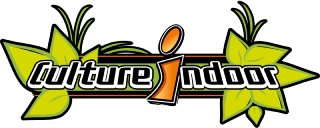What are the elements of a good indoor garden?
What does the term "indoor garden" mean?
Theindoor garden is a way of gardening at home. It is a way of gardening at home.
Indeed, everyone can grow flowers, fruits and vegetables at home . Either in your garden, outside or on your balcony, or in a room at home.
Culture Indoor helps you and accompanies you in the installation of your " indoor garden ", so that your garden develops in the best conditions, with material and powerful hydroponic tools at competitive prices!
Creating your own indoor garden requires a very particular practice, which often tends to high-tech gardening. We will therefore put all these technologies at your disposal as well as advice on how to create your own indoor garden. Thus, your horticultural production will be one of the most abundant and tasty.



Indoor gardening or inviting nature into your home
The success of a culture within a house or an apartment requires the application of a simple principle: to reproduce the conditions of the outside in inside (we invite you for that also to look at our advice on creating the natural conditions to create your indoor garden). In its natural state, four factors influence the development and production of plants:
The light
The light emitted by the sun plays an essential role for plants. It allows them to grow and develop, triggering fruiting and flowering. Let's take a look at some of the phenomena caused by light:
- photosynthesis is a very important biochemical process for the plant. It will allow it to develop thanks to the luminous activity which gets carbon dioxide CO² to the plant which, him, will reject oxygen O² thereafter.
- the photoperiod corresponds to the cycles of light and darkness. In an indoor culture, this means the periods during which your culture will be under the light of your lighting system, or when it is turned off. Hence the usefulness of a timer:




Example light
Indoor LedExample ballast
SuperLumensExample reflector
Lumatek - the color of the light source has also an influence on the plants cultivated indoors:
- cold with blue-white dominance for the growth, with bulbs (> 3000°K) MH, CFL or neon,



Example MH
SuperplantExample CFL
SylvaniaExample neon
Secret Jardin
- warm with red-orange dominance for flowering, with bulbs (< 3000°K) HPS, CFL or neon.



Example MH
SuperplantExample CFL
Esay-LightingExample neon
Secret Jardin
For more information, we invite you to consult our page dedicated to light and horticultural lighting.
The air
Indoors, none of the natural elements that generate CO² andO² are present, except the plant itself. It is thehorticulturist who must take care to bring some to him, otherwise it dies. You will then have to equip your room or cultivation room of an intraction/extraction system. Working by air intake, the ambient air of your indoor garden will be renewed, preventing the plants from suffocating. Also consider placing one or more fans in the direction of the plants.
The control of the climate also implies the regulation of the temperature. Indeed, added to the heat of the room, the tent, and the one emitted by the lighting, it is difficult to obtain a suitable room temperature for your crop. That's why it's useful to have elements such as a thermostata thermostat, an air conditionera humidifier and/oror an ultrasonic misting system.
 |
 |
 |
| Example of extraction Prima Klima |
Fan example Advanced Star |
Thermometer & hygrometer |
 |
 |
 |
| Example humidifier Ultramist |
Example mister |
Thermostat & hygrostat |
Do not hesitate to read our detailed article on the climate for more information.
Water
Obviously, water is the source of all life on Earth: it is a primordial element for plants and their development, as well as the diffusion of nutrients (which fertilizers also bring) in the soil (or a substrate) to their roots. It is therefore very important to irrigate your indoor garden. Whether it is for a traditional culture in soil, hydroponics or aeroponics.
Find more information on water and fertilizers and the water control.
The soil
The substrate is the medium where the roots develop and protect themselves from light, which they cannot tolerate, being photosensitive. Thus, there are several potting soils and growing substrates that can be classified in two distinct categories: soil andhydroponics.
The so-called traditional culture refers to the earth which does not require any or littlefertilizer. On the other hand, in the framework of an indoor soil culture, the plants are partitioned in pots and consequently must be carefully monitored in terms of nutrient supply.
As for hydroponics, it is possible to cultivate plants in a inert and sterile growing medium such as :
- the clay ball with high irrigation and water drainagecapacity

Plagron Euro Pebbles, Platinium Hydromix, Gold Label HydroCoco and Special Hydrocorn
- rock wool is known for its ability to retain water and nutrients,

Speedgrow Green, Grodanagra-Wool
- the coconut fibre is an ecological, renewable and biodegradable substrate,

Ugro Coco Pure, Biobizz Coco Mix Fibers, Plagron Coco, Gold Label HydroCoco 60/40, Platinium Coco-Mix + Perlite
- perlite allows the oxygenation of the root system

Plagron Perlite, Platinium perlite
- chilean sphagnum moss is a plant substrate, with organic matter and great antibacterial properties.

Sphagnum of Chile from 150g to 5Kg
The ability to bring these four elements together in a partitioned space (a room or a growing room) will determine the full success of a horticultural culture.
The advantages of the "indoor garden" culture?
Outside, the soil varies greatly and can contain toxic substances or harbor insects, fungi and other diseases. Indoors, you choose the substrate of your choice and adapt the nutrients to it, dosed very precisely according to the needs of your plant. You have permanent control over the pH and theECyou have permanent control over the plant's environment, parasites, deficiencies, humidity, nutrients, etc.
Thanks to the control of climate, temperature and light, grow the plants you want (tropical, fruit, etc.), all year long. The results can be surprising, with considerable savings on your fruit, vegetable and condiment expenses, and the assurance of consuming them without pesticides or other harmful substances. Plus, get up to six harvests a year, so seasons are no longer an obstacle!
Know how to plant without planting yourself and grow your indoor garden in all serenity!
Find all our tips for your indoor growing :
- Indoor growing tips : Light
- Indoor growing tips : Air
- Indoor growing tips : Substrate
- Advice for indoor growing : Water and fertilizers
- Growing tips for indoor plants : Germination and Cutting
- Growing tips for indoor plants : Growth
- Growing tips for indoor plants : Flowering
- Growing tips for indoor plants : The growing room
- Tips for indoor growing : Systems
- Growing tips for indoor plants : Water control
- Growing tips for indoor plants : Aquaponics
- Growing tips for indoor plants : Accessories

